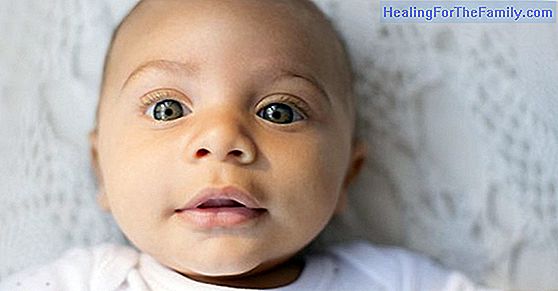Can a child be put on a diet?
Childhood obesity is a public health problem whose figures are alarming in developed countries. However, can a child be put on a diet? The first thing to clarify is that the term 'diet' does not mean reducing food intake to lose weight or maintain a certain body weight, but refers to the set of food
Childhood obesity is a public health problem whose figures are alarming in developed countries. However, can a child be put on a diet?
The first thing to clarify is that the term 'diet' does not mean reducing food intake to lose weight or maintain a certain body weight, but refers to the set of foods that are consumed regularly and their amounts. It is not the same to force a mother to reduce the food she offers her son so that he loses weight, than to try to educate both of them in healthy and appropriate nutritional habits for each age.
First we must look for the origin of overweight in the child

According to this, before a child diagnosed with overweight, the first action should be to make a study of his diet, to know what food he consumes, how they are cooked, and what is the size of the portions that are offered. This study must be comprehensive, and at least 3 days, including one of the weekend. In addition, you should also detail the physical activity that you usually develop.
With these data it is possible to determine if the cause of your overweight may be due to a lack of physical activity, an excess in caloric intake or a combination of both. The most usual, unfortunately, is that a low or no physical activity is added to an unbalanced diet with excess saturated and trans fats, from precooked and industrial pastries, and portions well above what is recommended for the child's age .
How to diet children
The alternatives once the study is done are several:
-Increase in physical activity if it is low. The current society has a tendency toward unhealthy sedentary lifestyle, and that is why children should be encouraged from childhood to play outdoors that allow the child to be active.
-Dietetic reeducation. Try to eliminate from the diet those foods with a high caloric density and a low nutritional density, favoring the consumption of other healthier ones. Changing industrial juices for pieces of fruit, biscuits for toast or industrial pastries for traditional snacks can make a big difference in caloric intake. Culinary processes that provide extra calories to the food, such as frying or batter, should also be avoided.
-Decrease in rations. All mothers are sad to leave their children hungry, so in this case, it is important that the child learns to decide when he has eaten enough, without getting full. Initially it can help, by decreasing the ration, accompanying the vegetable dishes that contribute to the feeling of filling to which the child is accustomed. Raw vegetables, which take longer to digest, prolong this sensation for longer.
An overweight child means, if not remedied, an obese adult in the future. As parents, we have in our hands the possibility of molding our children through the education we offer them. With a nutritional education and adequate dietary habits, not only are overweight and obesity avoided in childhood, but it is also possible to avoid them in adulthood.












